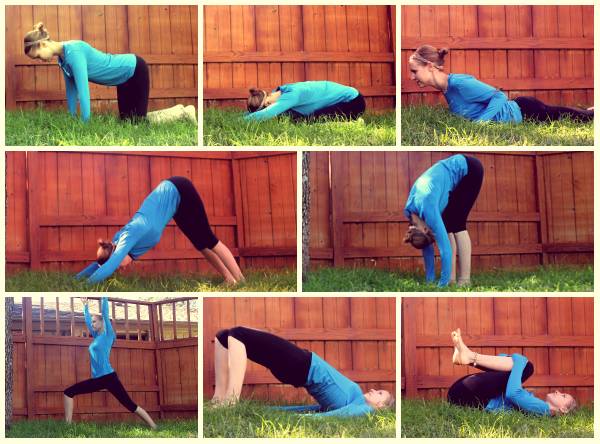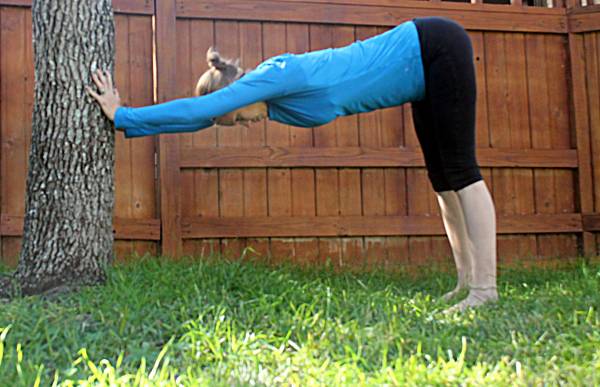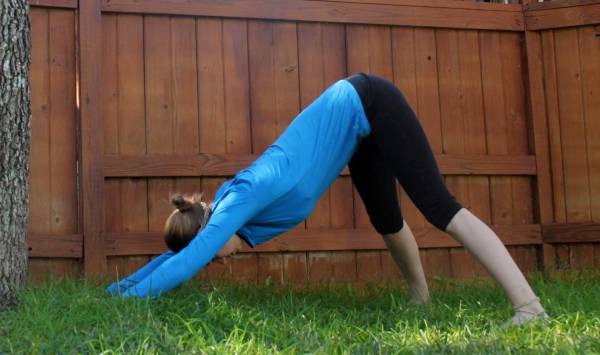Yoga teacher training is so different from the other fitness certifications I have done. There are real live teachers and intense twelve-hour training weekends. It’s a perfect balance of book learning, observation, and teaching experience.
RELATED: What Is Yoga and How Do I Pick a Style?
Contrast this with many other certification programs, where you buy an expensive book, absorb the information, pass the exam (hopefully), and get a piece of paper in the mail. Everyone would be much better off if they were required to work with actual people before they were certified. It’s way more hands-on and way more uncomfortable.
Let’s Get (Un)comfortable
One of the uncomfortable things we are doing in my class is designing a three-part series for people who are new to yoga. We will teach the series to people outside of class as a part of our training. Last time we met, we put together the first part of the series and practiced teaching each other.
“Yoga teacher training is so different from the other fitness certifications I have done. There are real live teachers and intense twelve-hour training weekends. It’s a perfect balance of book learning, observation, and teaching experience.”
This made me realize how different teaching yoga is from teaching someone how to do a deadlift or kettlebell swing. Three challenges in particular came to mind:
- Getting people into the yoga pose. I never realized how difficult it is to tell someone how to get into Downward Facing Dog. Try to explain it in words, without a demonstration. Then imagine you are telling someone who might not know whether her quads are located on her legs or her arms.
- Refining the poses. It’s easy to forget the refinements that make each pose most beneficial, like cuing breath or engaging muscles we often forget.
- Transitioning from one pose to another. Okay, so I got her into Downward Facing Dog and she looks perfect! But now how do I get her into a forward fold or Warrior I? And how do I do that with a whole studio full of people?
I’ve come to realize how much there is to learn and that this will be a lifelong journey. I am thankful to my instructors and the ladies in my class for their gracious feedback and help, and I can’t wait to keep learning how to share yoga in a safe, accessible way.
Our Beginner’s Series, Part One
Here is the first of the three yoga sequences we are developing. The three parts will gradually build on each other and allow our students to receive good alignment coaching from the get-go.
Beginner’s Series, Part One
- Centering (approximately 5 minutes)
- Warm Up (approximately 5-10 minutes)
- Cakravakasana
- Baby Cobra
- Downward Facing Dog
- Forward Fold
- Mountain Pose
- Warrior I
- Bridge
- Knees-to-Chest
- Savasana

These poses might seem easy to people who are practiced in yoga, but it was surprisingly challenging to talk someone into them without getting on the mat and demonstrating myself. Figuring out how to transition someone smoothly from one pose to the other also presented a unique challenge.
RELATED: 4 Questions Every Yoga Newbie Asks
The Mind of a Beginner
To take us back to the beginner’s mindset, my instructor DeLora asked us to write down five things we remembered about our first yoga class. These were mine:
- Looking around a lot
- Not knowing the names of anything
- Being surprised at how hard it was
- Wanting to look like I knew what I was doing
- Feeling awkward
As I think about teaching my first class to beginners, I’ve taken a mental note of modifications to offer. For the series above, I’ve had the hardest time teaching Downward Dog. It might be fundamental, but that doesn’t mean it’s easy – especially not for someone who is new to yoga. Our instructor Eduardo shared two modifications to offer our class:
- Downward Dog at the Wall (or a tree works, too)
- Downward Dog With a Wide Stance

Down Dog at the Wall

Down Dog with Wide Stance
I might start out teaching these modifications and wait until the second class to do the unmodified version, but I think I will wait and see how my students are doing before I decide. I guess that’s another part of teaching yoga I will have to get used to – learning to read bodies and cater to a specific population. It seems a bit like magic right now, but hopefully over time it will come more naturally.
Nicole Crawford is currently completing her Yoga Alliance RYT 200 training. Read her journals to learn what yoga teacher training is like and to see what she is learning along the way.
Photo 1 courtesy of Shutterstock.






